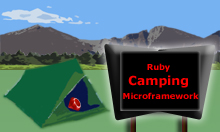Creating Wiki Content With Expression Design
For years now I have been creating architecture materials using PowerPoint. People often ask why I don’t use Visio instead. Well most of the time I really need to mix text content for presentation purposes with graphics. Yes I could create my graphics in Visio, paste them in PowerPoint and move on. But I have always found the user experience painful and the day PowerPoint introduced line connectors I turned away from Visio and never looked back. Once you master PowerPoint and create templates, custom toolbars with your most frequent tools (align, etc.) you can whip content very quickly.
But recently I had an interesting experience while starting to work on content for our enterprise wiki (based on DokuWiki). I needed to reuse some of my graphical diagrams. My first approach was to group the objects I needed and save the as jpeg images. This feature is definitely convenient and gets you there, but the quality of the rendered text is very poor and once I scaled the image in the wiki, it did not look very good and in some case very hard to read.
So what to do? Recreate content using a “true” media design tool? And start creating new illustration using the new tool? That sounds reasonable. But what tool?
I have been using Adobe Photoshop Elements for years, mostly for photo editing though and some illustrated screenshots of web site features. But I as powerful as it is, I have always found it heavy to use. Now if I was a graphic designer this would be fine, but as an architect and developer I need a more productive tool. So with the release of Microsoft Expression Design and Blend, I had been thinking I would mostly use Blend for Silverlight and XAML editing and some occasional content. So this week I started to kick the tires on Expression Design. To my surprise, I found it very natural to use and easy to adopt as it starts by showing basic features: simple palette, canvas, graphic properties, very few menus, and then progressively exposes more complex features.
Here is what I found appealing in Expression Designer:
- Good usability: grey tone UI design is easy on the eyes combined with good organization of key features
- Does not overwhelm you with a plethora of features and icons (like Photoshop)
- More complex features (like gradients and text adjustments) can be discovered over time
- Sophisticated visual editing of points, path
- Drag and size capabilities in zoom, color values
- Support for XAML output (will make it easier for Silverlight content)
Of course, there is always room for improvements in the following areas:
- Providing the ability to use connectors
- Being able to create a custom toolbar with your frequently-used tools would boost productivity
- Having a palette of your custom graphics would make it easier to manage and reuse common elements
So I am now slowly building a library of design elements I can combine into nice visuals for both slides and visual content.
For more reference, see Learn Expression Design.






